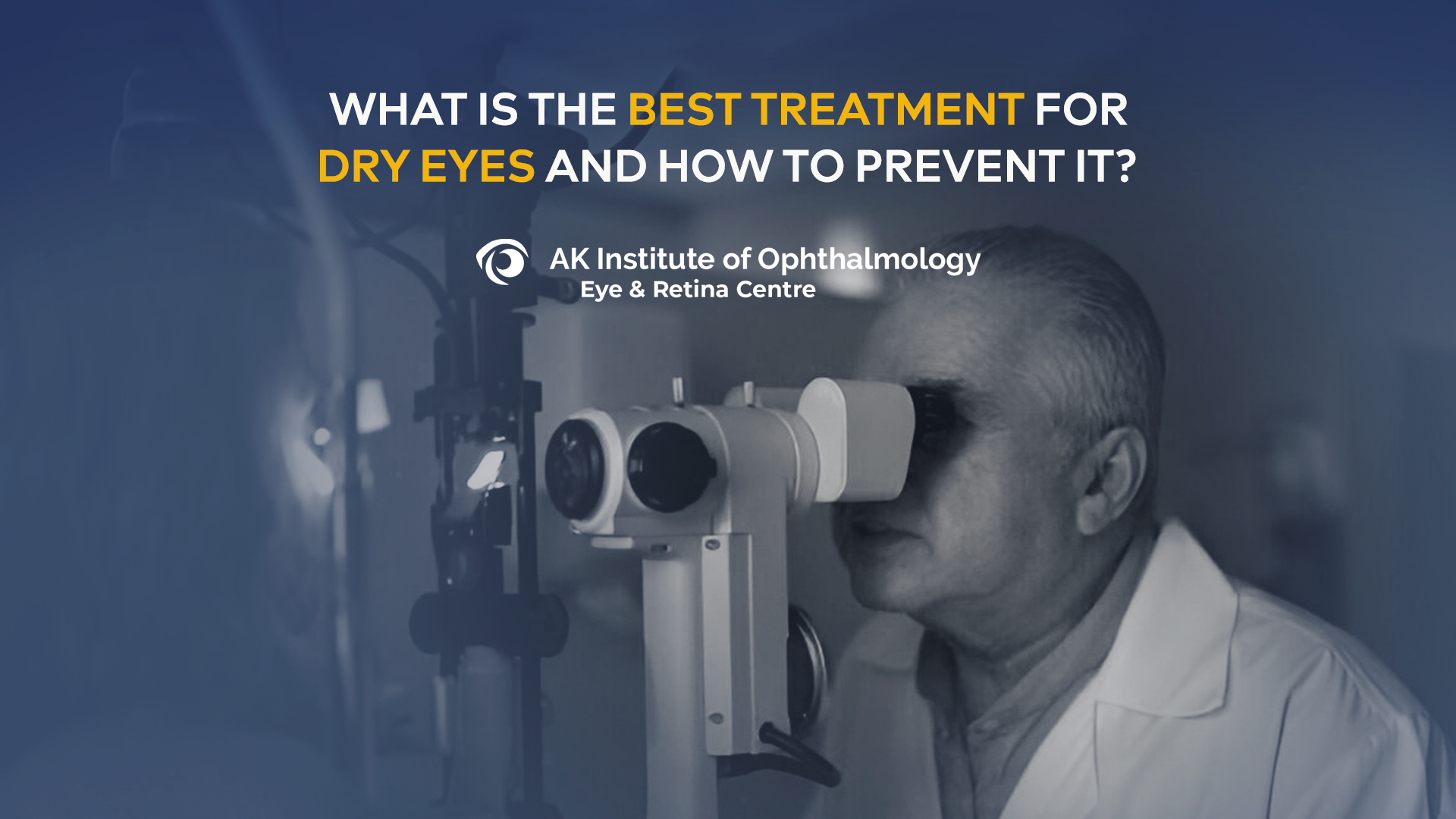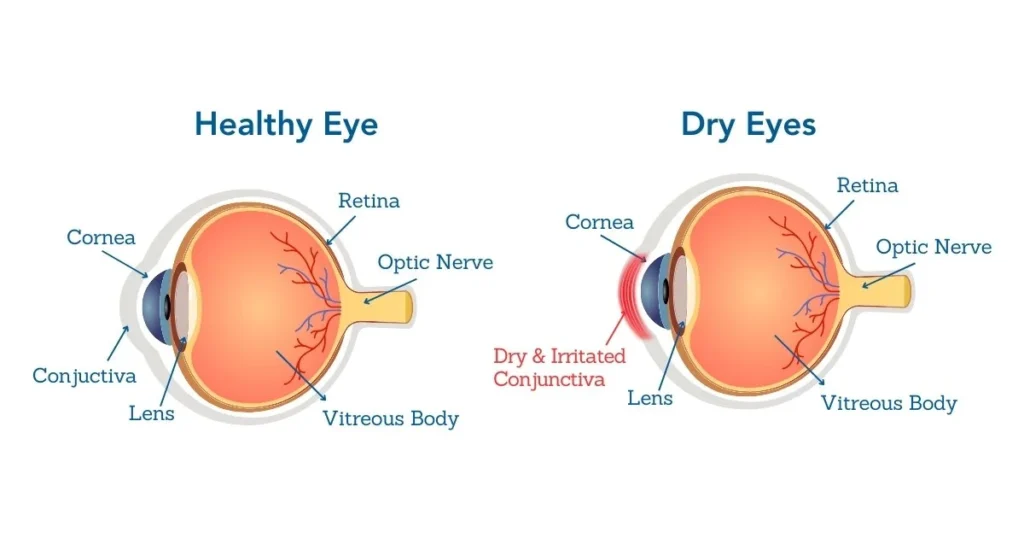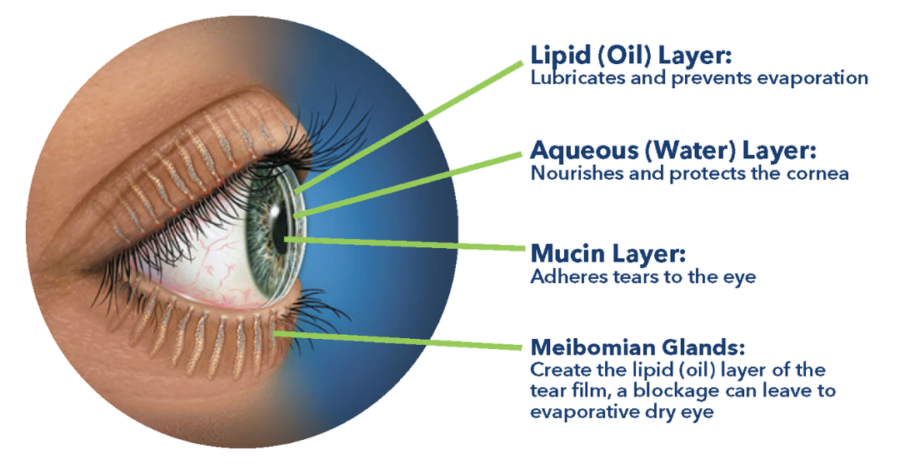
 Posted By Akio
Posted By Akio- Comments 0
Your eyes need tears to stay healthy, comfortable, and lubricated. Without tears, your eyes may sting, burn, or redden, causing discomfort. This condition is known as Dry eye. It happens when the glands around our eyelids don’t produce enough tears, leading to inflammation and damage to the surface of the eye.
Choosing the best treatment for dry eyes depends on various factors based on your eye health and underlying conditions. This blog will dive deeper into those factors as well as options for you to choose the best treatment for dry eyes based on the severity of your symptoms.
Dry eye disease symptoms and causes
Here are some of the common dry eyes symptoms and causes listed below:
Symptoms of Dry eye
Having a dry eye may constantly give a scratchy or gritty sensation of having something stuck in your eyes. However, there are many more chronic dry eye symptoms, which may include:
- Burning and stinging in your eyes
- Sensitivity to light
- Blurred vision, especially while reading
- Mucus in or around your eyes
- Excess tears in your eyes
- Difficulty in driving during the night
- Discomfort in wearing contact lenses
- Red or irritated eyes, especially in the windy atmosphere.

Causes of Dry eye
Dry eyes could occur due to multiple reasons, ageing being the highest factor, as it leads to a reduction of tears produced by your eyes. Other causes of dry eye can be:
- Illnesses like rheumatoid arthritis, diabetes, Sjogren’s syndrome, etc.
- Hormonal changes in women, especially during pregnancy
- Poor blinking habits caused by staring at screens
- Indulging in habits that reduce blinking – such as playing video games, reading, etc.
- Using contact lenses for a long period
- Taking certain medications like antihistamines, antidepressants, diuretics, etc.
- Having undergone a refractive eye surgery
Prevention of Dry Eyes
Although dry eyes caused by environmental factors can be helped by natural methods like frequent blinking, or wearing sunglasses outside, there are a few lifestyle changes that help prevent dry eye disease, such as:
- Avoiding blowing air in your eyes
- Using a humidifier indoors to add moisture to the air
- Take periodic eye breaks by blinking repeatedly or closing your eyes for a few minutes
- Avoiding visiting areas located at high altitudes
- Avoiding being in dry places
- Positioning the computer screen below the eye level
- Avoiding smoking
- Using artificial tears regularly
Treatment options
Based on the severity of your symptoms and underlying conditions, there is a wide range of treatments available for dry eyes.
- Using Anti-Inflammatory Medications
Inflammation around the edge of your eyelids may prevent oil glands from producing oil into your tears, which causes hindrance in their lubrication. Antibiotic medications may be prescribed in this case.
- Using Eye Drops for Cornea Inflammation
Cornea inflammation can be managed with eye drops that contain the immune-suppressing medicine cyclosporine or corticosteroids.
Some of these are:
- Artificial tears
- Ointments
- Topical cyclosporine A eye drops

- Punctal Occlusion
This is a mechanical procedure in which a tiny silicone plug is inserted into the punctum in your lower eyelid, allowing more tears to stay in your eyes, as well as retain the artificial tears that you may have added. This is suitable for those whose eyes don’t produce enough tears.
- Use of Scleral Lens
To a dry eye, wearing traditional contact lenses can be very uncomfortable due to sensitive cornea. Therapeutic lenses like Scleral lenses don’t come into contact with cornea which helps provide moisture to the irritated eye and promotes healing.
Dry eyes can also be experienced during the nighttime, catering to factors such as age, hormonal changes, health conditions, nocturnal lagophthalmos, or medications such as antidepressants. In this case, the best treatment for dry eyes at night includes:
- Prescription medications that help reduce inflammation, like Retasis, Xiidra, Miebo, and Tyrvaya.
- Blocking your tear ducts using plugs to help retain natural tears
- Artificial tear gels or ointments to help moisturize your eye
Treatment for Dry Eyes
Even though Chronic dry eyes can rarely be resolved fully, choosing the right treatment can help significantly. The two most common treatments are:
- Lipiflow® Thermal Pulsation System
LipiFlow Thermal Pulsation System is an FDA-approved treatment for dry eyes caused by Meibomian gland dysfunction, which is the leading cause of dry eye. This treatment uses heat and massage to warm the meibomian glands and improve tear functionality by restoring healthy oil production.
LipiFlow has 2 main components, among which one is a small piece resembling a contact lens to heat your eyelids, and the other connects to a shield and helps release the clogged oil from your eyelids. The duration of this treatment is approximately 12 minutes.
In Delhi, the LipiFlow Thermal Pulsation System costs around ₹30,000-40,000.
- Intense Pulsed Light (IPL) Therapy
IPL therapy is a non-invasive treatment for dry eyes, also known as a Photofacial. It can also help improve the function of the meibomian glands, though it was initially designed for cosmetic purposes. This treatment uses scattered pulsing light to warm the eyelids and treat blocked glands to prevent tears from evaporating quickly.
In Delhi, the cost of IPL therapy is around ₹1,500-6,000, with an average cost of ₹4,500.
Conclusion
Dry eye disease affects more than the comfort of your eyes. It also hinders your capability to work efficiently and socialize, making you feel isolated. A dry eye may even restrict the places where you can go. It is also common to experience a negative impact on your mental health. It is essential in this case to reach out to your healthcare provider to discuss the best treatment for dry eyes based on your eye health and lifestyle.
Recent Posts
- The Impact of Nutrition on Eye Health: Foods That Boost Your Vision
- Signs That Suggest Your Child May Need an Eye Check-up
- Meet Our Expert Team: Spotlight on Dr. Atul Kumar and Dr. Aman Kumar
- Why Regular Eye Checkups Are Essential After 40: What to Expect and Watch For
- Head Positioning After Retina Surgery: A Key to Optimal Recovery



